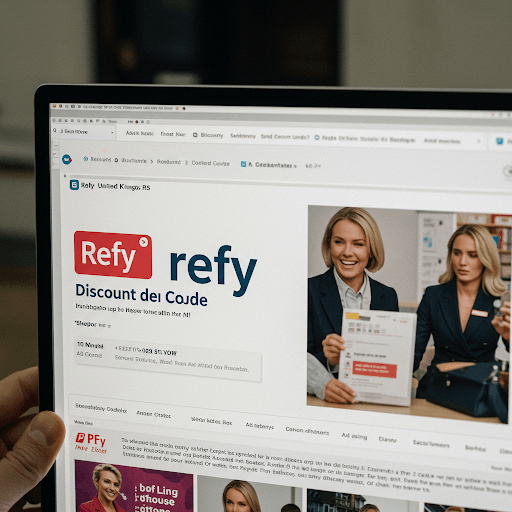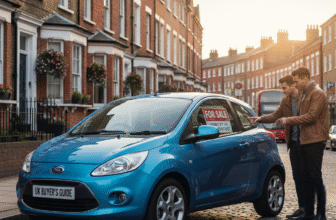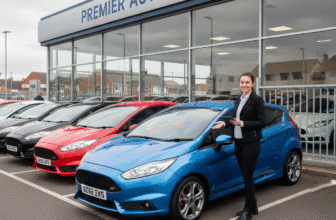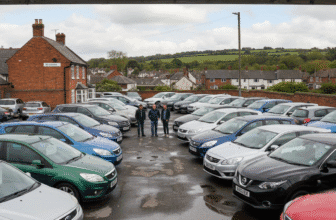
Searching for an Audi Q2 for Sale? Your Comprehensive UK Guide
The UK car market is brimming with choices, especially in the booming compact SUV segment. Standing out from the crowd requires something special, and that’s precisely where the Audi Q2 comes in. Since its arrival, this smallest member of Audi’s prestigious ‘Q’ family has carved a niche for itself, blending premium appeal with city-friendly dimensions and a distinctive sense of style. If you’re currently scanning the classifieds or Browse dealership websites for an ‘Audi Q2 for sale’, you’re considering a vehicle that offers more than just transport; it offers a statement.
But what makes the Q2 a compelling choice, especially in the often-competitive used car market here in the UK? This guide aims to delve deep into the world of the Audi Q2, covering everything from its design philosophy and model variations to engine choices, running costs, and crucial tips for finding the perfect example for your needs. Whether you’re drawn to its sharp looks, the allure of the four rings on the grille, or its promise of quality engineering, read on to discover if the Q2 is the right compact SUV for you.
What Exactly is the Audi Q2?
Launched in 2016, the Audi Q2 represented a bold move for the German manufacturer. It aimed to capture a younger demographic, bringing Audi’s renowned quality and design flair into the rapidly expanding small crossover market. Unlike its larger siblings (Q3, Q5, Q7), the Q2 wasn’t just a scaled-down version. It introduced a unique design language Audi called “polygon design,” featuring sharp creases, distinctive angles, and a robust stance that belied its relatively compact footprint.
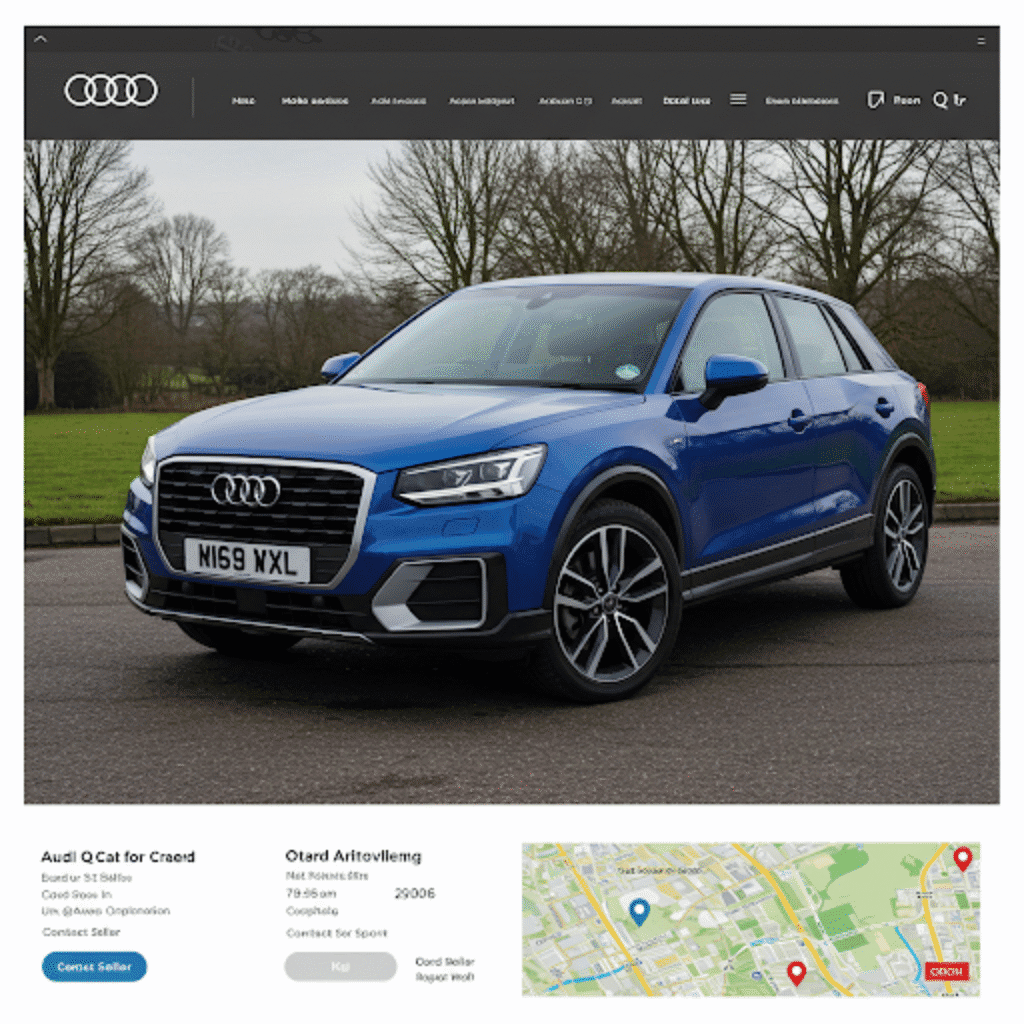
One of the most talked-about design features was, and remains, the customisable C-pillar ‘blades’. These panels, located behind the rear passenger windows, could be specified in different colours or finishes (like grey, silver, or body colour), allowing owners to add a personal touch. This focus on personalisation was a key part of the Q2’s initial appeal.
Built on the Volkswagen Group’s versatile MQB platform (shared with cars like the Audi A3 and VW Golf), the Q2 promised sophisticated underpinnings and access to a wide range of modern engines and technologies. It positioned itself as a premium alternative to mainstream rivals like the Nissan Juke or Renault Captur, while also competing against other premium contenders such as the MINI Countryman.
Why Consider an Audi Q2? Key Strengths
Several factors contribute to the Q2’s enduring popularity on the UK’s roads and in the used car listings:
- Premium Badge Appeal: For many buyers, the Audi badge signifies quality, sophisticated technology, and desirable image. The Q2 makes this accessible in a smaller, more affordable package compared to larger Audi SUVs.
- Distinctive Styling: In a sea of similar-looking crossovers, the Q2 genuinely stands out. Its angular design, bold grille, and those unique C-pillar blades give it character. It avoids looking like a generic bubble car.
- High-Quality Interior: Step inside, and the Q2 typically delivers on Audi’s reputation for superb build quality. Materials feel solid, switches operate with precision, and the overall design is clean and ergonomic. Higher trims offer plush materials and advanced tech.
- Engaging Driving Experience: While comfort is generally good, the Q2 offers relatively agile handling for an SUV. Its steering is precise, and it feels stable and composed on typical British roads. Engine choice significantly impacts performance, but most options provide adequate power.
- Technology Showcase: Even early models offered features like the MMI infotainment system. Crucially, many used Q2s feature the highly desirable Audi Virtual Cockpit – a fully digital instrument display that adds a real wow factor and enhances usability. Other tech includes smartphone integration (Apple CarPlay/Android Auto), driver assistance systems, and premium sound options.
- Surprising Practicality: For its size, the Q2 offers decent practicality. The boot is well-shaped and offers around 405 litres of space (competitive in its class), expanding significantly with the rear seats folded. While rear legroom isn’t vast, it’s adequate for children or occasional adult use.
- Strong Safety Credentials: The Q2 achieved a full five-star rating in Euro NCAP safety tests, reflecting its strong structure and the availability of numerous safety features, including autonomous emergency braking as standard on many models.
Navigating the Audi Q2 Model Timeline (UK Market)
Understanding the Q2’s evolution helps when searching for a used model:
Pre-Facelift Models (Approx. 2016 – 2020)
These early Q2s established the car’s identity. Key things to know:
- Engines: Popular choices included the fuel-efficient 1.0 TFSI petrol (around 115bhp), the versatile 1.4 TFSI petrol with Cylinder-on-Demand technology (around 150bhp), and the economical 1.6 TDI diesel (around 115bhp). A more powerful 2.0 TDI diesel and 2.0 TFSI petrol (often with Quattro all-wheel drive) were also available.
- Transmissions: A 6-speed manual gearbox was standard on lower-powered engines, while the smooth-shifting 7-speed S tronic automatic was optional or standard on higher-powered variants.
- Trims: Initial UK trims typically included SE (basic spec), Sport (adding style and comfort features), and S line (sportier looks, larger wheels, often firmer suspension). Limited ‘Edition #1’ models were available at launch with unique styling and high specifications.
- Technology: Standard MMI screen with rotary controller. Audi Virtual Cockpit, navigation, and advanced driver aids were usually optional extras or included on higher trims/special editions.
Facelifted Models (Approx. Late 2020 Onwards)
Audi gave the Q2 a mid-life refresh to keep it competitive. Changes included:
- Subtle Styling Updates: Revised front and rear bumpers, a slightly altered grille design, and updated LED headlight signatures (standard LEDs became more common). New alloy wheel designs and paint colours were introduced.
- Interior Tweaks: While the overall layout remained similar, materials and trim inserts were updated. The gear lever design (especially for S tronic) was often changed. Infotainment systems received software updates.
- Engine Revisions: The engine lineup was streamlined to meet newer emissions regulations (WLTP). The 1.4 TFSI was generally replaced by the slightly updated 1.5 TFSI (still around 150bhp). Diesel options became less prominent in some markets due to shifting demand, but TDI engines continued.
- Trim Structure Adjustments: The entry-level trim was often renamed ‘Technik’, while Sport, S line, and Black Edition remained popular. The top-spec ‘Vorsprung’ trim arrived, bundling virtually all optional extras.
- Standard Equipment Boost: Later models often feature more standard equipment, such as LED headlights and rear parking sensors, even on lower trims compared to the earliest examples.
The Performance Option: Audi SQ2
For those seeking serious performance, the Audi SQ2 arrived later in the pre-facelift era and continued post-facelift. Packing a potent 2.0 TFSI petrol engine (around 300bhp), Quattro all-wheel drive, and the S tronic gearbox as standard, the SQ2 offers hot-hatch rivalling pace in a compact SUV body. It features significantly lowered suspension, larger brakes, quad exhaust pipes, and a unique body kit. It’s a niche model but provides thrilling performance if your budget allows.
UK Trim Levels Demystified
When Browse ‘Audi Q2 for sale’ adverts, you’ll encounter various trim levels. While exact specifications can vary slightly by model year and optional extras fitted, here’s a general guide to the common UK hierarchy:
- SE / Technik: The entry point. Typically includes alloy wheels (often smaller sizes), air conditioning, the standard MMI infotainment system (likely without navigation unless added), basic cruise control, rear parking sensors (more likely on later models), and essential safety features. Fabric seats are standard.
- Sport: Builds on SE/Technik. Usually features slightly larger alloy wheels, different bumper designs, sports seats (often with upgraded cloth), satellite navigation (often standard or a common option here), automatic lights and wipers, and sometimes Audi Drive Select (allowing mode changes for steering/throttle response).
- S line: The sporty choice. Recognisable by its distinctive S line body styling (more aggressive bumpers, side skirts, rear spoiler), larger alloy wheels (typically 18-inch), lowered sports suspension (can make the ride firm, especially on poor roads – test drive is vital!), LED headlights, part-leather sports seats embossed with the S logo, and brushed aluminium interior trim.
- Black Edition: Based on S line, this trim adds a stealthy look. Key features include black finishing for the grille surround, window trim, mirror caps, C-pillar blades, and often roof rails. It usually comes with unique, often larger, alloy wheels (sometimes 19-inch) typically finished in black or dark grey, and privacy glass. Interior specification is similar to S line but might include specific upgrades like a flat-bottomed steering wheel or enhanced sound system.
- Vorsprung: The range-topper (mainly on later/facelifted models). This trim aims to include almost everything. Expect top-tier features like the largest alloy wheels, Matrix LED headlights, panoramic sunroof, full leather upholstery, Bang & Olufsen premium sound system, Audi Virtual Cockpit, head-up display, adaptive cruise control, reversing camera or 360-degree cameras, and a full suite of driver assistance systems. It commands a significant price premium, both new and used.
Important Note: Audi offered many features as individual options or in packs (like the Technology Pack, often including Virtual Cockpit and upgraded navigation). Always check the specific advert details or inspect the car carefully to confirm exactly what features are included, as a lower trim car could be highly specified with options.
Engine Choices Under the Bonnet
The Q2 has been offered with a sensible range of petrol (TFSI) and diesel (TDI) engines. Here’s a breakdown of common options found in UK used examples:
Petrol (TFSI)
- 1.0 TFSI (30 TFSI): A surprisingly punchy three-cylinder turbocharged engine, typically producing around 115bhp. It’s great for town driving and offers good fuel economy. Might feel a little strained on long motorway inclines when fully loaded, but perfectly adequate for most. Usually paired with a manual gearbox, though S tronic auto is available.
- 1.4 TFSI CoD / 1.5 TFSI Evo (35 TFSI): A popular four-cylinder turbocharged engine producing around 150bhp. The ‘CoD’ (Cylinder on Demand) or ‘Evo’ versions can shut down two cylinders under light load to save fuel. This engine offers an excellent blend of performance and efficiency, feeling noticeably more flexible than the 1.0 TFSI. Available with manual or S tronic gearboxes.
- 2.0 TFSI (40 TFSI): A more powerful four-cylinder turbo, often producing around 190bhp. Usually paired exclusively with the S tronic gearbox and often linked with Quattro all-wheel drive. Provides brisk performance and effortless cruising ability. Naturally, fuel consumption is higher.
- 2.0 TFSI (SQ2): As mentioned, the high-performance variant with around 300bhp, S tronic, and Quattro standard. Offers serious speed.
Diesel (TDI)
- 1.6 TDI (30 TDI): A four-cylinder turbodiesel, typically around 115bhp. Known for its strong fuel economy, making it a good choice for high-mileage drivers. Performance is steady rather than sparkling. Available with manual or S tronic. Less common on later facelifted models.
- 2.0 TDI (35 TDI / 40 TDI): Offered in various power outputs, commonly around 150bhp (35 TDI) or sometimes closer to 190bhp (40 TDI). Provides muscular torque, making for relaxed motorway driving and effortless overtaking. The 150bhp version offers a great balance of power and economy. Higher output versions often came with Quattro and S tronic.
Which Engine is Best? For most UK buyers, the 1.5 TFSI (or the earlier 1.4 TFSI) hits the sweet spot, offering enough performance for varied driving without excessive running costs. The 1.0 TFSI is fine if primarily driving in urban areas. High-mileage drivers might still favour the 1.6 TDI or 2.0 TDI (150bhp) for their fuel efficiency, though be mindful of potential future restrictions on older diesel vehicles in some city centres (check ULEZ compliance if relevant).
Your Checklist: Finding the Right Audi Q2 for Sale
Armed with knowledge about models, trims, and engines, how do you find the best used Q2?
Where to Look:
- Audi Approved Used Network: Offers cars prepared to a high standard, usually with comprehensive warranties (at least 12 months), background checks, and potential benefits like roadside assistance. Often pricier but provides peace of mind.
- Reputable Independent Dealers: Can offer competitive pricing and sometimes more varied stock. Look for established dealers with good reviews. Check what warranty (if any) is included.
- Online Marketplaces: Websites like Auto Trader, Motors.co.uk, PistonHeads, and Gumtree list thousands of Q2s from dealers and private sellers across the UK. Use filters effectively to narrow your search by price, age, mileage, spec, and location.
- Private Sellers: Can sometimes offer the lowest prices, but involves more risk. Inspections and checks are entirely your responsibility, and there’s no warranty recourse if things go wrong shortly after purchase.
What to Check (Used Buyer’s Guide):
- Condition Assessment: Walk around the car in good light. Check for mismatched paint (suggesting accident repair), dents, deep scratches, and kerb damage on alloy wheels. Inside, look for excessive wear on the seats (especially the driver’s bolster), steering wheel, gear knob, and pedals. Check carpets and headlining. Does the wear match the stated mileage?
- Full Service History: This is crucial. Check the service book (physical or digital record accessible via the infotainment system on newer models) for regular maintenance stamps, ideally from Audi dealers or recognised specialists. Pay attention to major service intervals. S tronic gearboxes require oil changes at specific intervals (typically around 40,000 miles) – ensure this has been done. Cambelt changes are needed on some engines (check schedule based on engine code/mileage/age).
- Mileage and Age: Consider the average UK mileage (around 8,000-12,000 miles per year) but focus more on condition and history. A well-maintained higher-mileage car can be better than a neglected low-mileage one.
- Specification Verification: Ensure the car has the trim level and, crucially, any specific optional extras you desire (e.g., Virtual Cockpit, panoramic roof, upgraded sound system, specific driver aids). Don’t rely solely on the advert description – check the car itself.
- Thorough Test Drive: Drive the car on various road types (town, A-roads, dual carriageway if possible).
- Listen for any knocks or bangs from the suspension (especially on S line models with larger wheels).
- Check the brakes feel strong and progressive.
- Feel for smooth gear changes (manual and S tronic). Any hesitation or jerky changes on the S tronic needs investigation.
- Does the engine pull cleanly without smoke or odd noises?
- Test all electrics: windows, mirrors, air con (blows cold?), infotainment system, Virtual Cockpit (if fitted), lights, wipers, parking sensors, camera etc.
- Vehicle History Check (HPI/Experian): Absolutely essential for any used car purchase. This check reveals if the car has outstanding finance, has been reported stolen, written off by insurance, or has mileage discrepancies. Don’t skip this step!
- Known Q2 Points: While generally reliable, some points occasionally mentioned by owners include: potential water pump/thermostat housing leaks on some petrol engines, occasional MMI infotainment glitches (software updates can sometimes fix), and the importance of correct S tronic servicing for longevity. Listen for timing chain rattle on higher mileage TFSI engines, though this isn’t exceptionally common.
Understanding Used Audi Q2 Pricing in the UK
Prices for used Audi Q2s vary significantly based on age, mileage, condition, specification, engine, and seller type. As of early 2025, here’s a rough guide:
- Early Models (2016-2018): You might find higher-mileage examples starting from around £11,000 – £14,000, often in SE or Sport trim with manual gearboxes.
- Mid-Range (2018-2020): A budget of £15,000 – £20,000 opens up a wider choice, including well-specced Sport and S line models, potentially with the desirable 1.4/1.5 TFSI engine and S tronic gearbox, and reasonable mileage.
- Facelift Models (Late 2020 onwards): Prices generally start from £20,000+ and can rise significantly for nearly new, low-mileage examples in S line, Black Edition, or Vorsprung trims, potentially exceeding £30,000 or more.
- SQ2 Models: Used SQ2s typically command prices from the mid-£20,000s upwards, depending heavily on age and mileage.
Disclaimer: These are estimates. Always research current market values on major UK car sales portals for the specific year, spec, and mileage you are interested in.
Factoring in Running Costs
Beyond the purchase price, consider ongoing costs:
- Insurance: Insurance groups vary depending on trim and engine. Lower-powered models like the 1.0 TFSI Technik will be cheaper to insure than an S line 2.0 TFSI Quattro or an SQ2. Get quotes before buying.
- Road Tax (VED): For cars registered after 1st April 2017, most Q2s (except potentially the very highest list price models initially) fall into the standard flat rate (£190 per year as of 2024/25 for petrol/diesel). Cars registered before this date have VED based on CO2 emissions, meaning some highly efficient versions (like the 1.6 TDI) could be very cheap or even free to tax. Beware that cars with a list price over £40,000 when new incur an additional VED surcharge for years two to six.
- Fuel Economy: Diesels (TDI) generally offer the best MPG, especially the 1.6 TDI. The 1.0 TFSI and 1.5 TFSI petrols are also reasonably efficient. The 2.0 TFSI engines (especially the SQ2) will be thirstier. Check official WLTP figures but expect slightly lower real-world results.
- Servicing and Maintenance: Audi main dealer servicing can be expensive. Many owners use reputable independent VW/Audi specialists for routine maintenance after the warranty period to save money. Costs depend on the type of service (minor/major) and any required repairs. Tyres, especially the larger ones on S line/Black Edition models, can be costly to replace.
How Does the Q2 Compare? Alternatives to Consider
While the Q2 is appealing, it’s worth knowing the competition:
- MINI Countryman: Offers quirky retro style, a fun driving experience, and surprisingly practical interior. Also holds value well.
- BMW X1/X2: The X1 is more practical, while the X2 offers sportier ‘coupe’ styling. Both provide sharp handling and strong engine choices, often with a rear-wheel-drive bias feel (though many are front or all-wheel drive).
- Mercedes-Benz GLA: Focuses more on comfort and features a high-tech, flashy interior, especially on newer generations.
- Volvo XC40: Champions safety, Scandinavian cool design, and a very comfortable, high-quality cabin. Strong hybrid options available.
- Volkswagen T-Roc: Shares underpinnings with the Q2 but offers funkier styling (especially with two-tone roofs) and often slightly lower pricing, albeit with a less premium-feeling interior.
- Mazda CX-30: A mainstream rival that punches above its weight with sharp looks, an exceptionally high-quality interior for its price, and engaging handling.
The Q2 often wins buyers over with its specific blend of sharp Audi design, perceived build quality, strong residuals, and that desirable badge, even if some rivals offer more space or outright comfort.
The Final Verdict: Is a Used Audi Q2 Right for You?
The Audi Q2 is a stylish, desirable, and high-quality entry into the premium compact SUV market. It offers a great image, a well-crafted interior, access to advanced technology like the Virtual Cockpit, and a range of capable engines. Its distinctive design helps it stand out, and for many UK buyers, it strikes an appealing balance between premium feel and manageable dimensions.
However, it’s not without potential drawbacks. It can be relatively expensive compared to mainstream rivals, rear passenger space is adequate rather than generous, and the ride on S line models with larger wheels and sports suspension can be firm on broken UK roads. Careful specification checking is essential, as many desirable features were optional extras.
If you’re searching for an ‘Audi Q2 for sale’, take your time. Research the specific model year, trim, and engine that interests you. Prioritise cars with a complete service history, perform thorough checks, and always take a comprehensive test drive. Finding a well-cared-for example with the right specification can reward you with a genuinely premium and enjoyable compact SUV experience.


